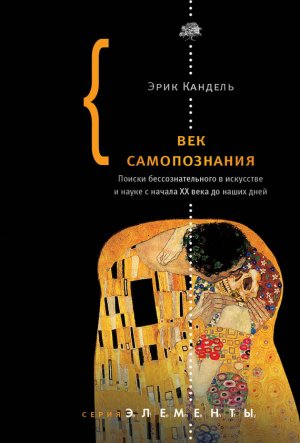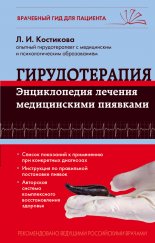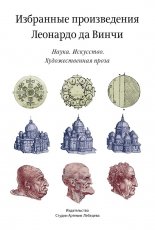┬ňŕ ˝Óýţ´ţšÝÓÝŔ . ¤ţŔ˝ŕŔ ßň˝˝ţšÝÓ˛ňŰŘÝţŃţ Ô Ŕ˝ŕˇ˝˝˛Ôň Ŕ ÝÓˇŕň ˝ ÝÓ¸ÓŰÓ XX ÔňŕÓ ńţ ÝÓ°Ŕ§ ńÝňÚ ╩ÓÝńňŰŘ ŢŔŕ

Berridge, K. C., andáM.áL. Kringelbach Effective neuroscience ofápleasure: Rewards ináhumans andáanimals // Psychopharmacology 199 (2008): 457ľ480.
Blakeslee, S., andáM. Blakeslee TheáBody Has aáMind ofáIts Own. HowáBody Maps ináYour Brain Help You Do (Almost) Everything Better. NewáYork: Random House, 2007.
Cohen, P. Next big thing ináEnglish: Knowing that they know that you know // NewáYork Times, Aprilá1:áC1.
Damasio, A. Theásomatic marker hypothesis andátheápossible functions ofátheáprefrontal cortex // Proceedings ofátheáRoyal Society ofáLondon B 351 (1996): 1413ľ1420.
Damasio, A. TheáFeeling ofáWhat Happens: Body andáEmotion inátheáMaking ofáConsciousness. NewáYork: Harcourt Brace, 1999.
Darwin, C. TheáExpression ofátheáEmotions ináMan andáAnimals. NewáYork: Appleton-Century-Crofts, 1872.
Ditzen, B., Schaer, M., Gabriel, B., Bodenmann, G., Ehlert, U., andáM. Heinrichs Intranasal oxytocin increases positive communication andáreduces cortisol levels during couple conflict // Biological Psychiatry 65 (9) 2009: 728ľ731.
Donaldson, Z. R., andáL.áJ. Young Oxytocin, vasopressin, andátheáneurogenetics ofásociality // Science 322 (2008): 900ľ904.
Gray, J. A., andáN. McNaughton TheáNeuropsychology ofáAnxiety: AnáEnquiry into theáFunctions ofátheáSepto-Hippocampal System. 2nd ed. Oxford Psychology Series No. 33. Oxford: Oxford University Press, 2000.
Insel, T.áR. Theáchallenge ofátranslation inásocial neuroscience: Aáreview ofáoxytocin, vasopressin, andáaffiliative behavior // Neuron 65 (2010): 768ľ779.
Jhou, T.áC., Fields, H. L., Baxter, M. G., Saper, C. B., andáP.áC. Holland Theárostromedial tegmental nucleus (RMTg), aáGABAergic afferent toámidbrain dopamine neurons, encodes aversive stimuli andáinhibits motor responses // Neuron 61 (5) 2009: 786ľ800.
Kamin, L.áJ. Predictability, Surprise, Attention, andáConditioning / In: Punishment andáAversive Behavior. Campbell, B. A., andáR.áM. Church, eds. NewáYork: Appleton-Century-Crofts, 1969. Pp. 279ľ296.
Kampe, K. K., Frith, C. D., Dolan, R. J., andáU. Frith Reward value ofáattractiveness andágaze // Nature 413 (2001):á589.
Kandel, E.áR. Biology andátheáFuture ofáPsychoanalysis / In: Psychiatry, Psychoanalysis, andátheáNew Biology ofáMind. Arlington, VA: American Psychiatric Publishing, 2005. Ch.á3.
Kirsch, P., Esslinger, C., Chen, Q., Mier, D., Lis, S., Siddhanti, S., Gruppe, H., Mattay, V. S., Gallhofer, B., andáA. Meyer-Lindenberg Oxytocin modulates neural circuitry forásocial cognition andáfear ináhumans // Journal ofáNeuroscience 25 (2005): 11489ľ11493.
Kosfeld, M., Heinrichs, M., Zak, P. J., Fischbacher, U., andáE. Fehr Oxytocin increases trust ináhumans // Nature 435 (2005): 673ľ676.
Kosterlitz, H. W., andáJ. Hughes Some thoughts onátheásignificance ofáenkephalin, theáendogenous ligand // Life Sciences 17 (1) 1975: 91ľ96.
Kris, E. Psychoanalytic Explorations ináArt. NewáYork: International Universities Press, 1952.
Linden, D.áJ. TheáCompass ofáPleasure: How Our Brains Make Fatty Foods, Orgasm, Exercise, Marijuana, Generosity, Vodka, Learning andáGambling Feel SoáGood. NewáYork: Viking Press, 2011.
Natter, T. Portraits ofáCharacters, Not Portraits ofáFaces: AnáIntroduction toáKokoschkaĺs Early Portraits / Oskar Kokoschka: Early Portraits ofáVienna andáBerlin, 1909ľ1914. Neue Galerie. NewáYork. 2002.
Ochsner, K. N., Bunge, S. A., Gross, J. J., andáJ.áD. E. Gabrieli Rethinking feelings: AnáfMRI study ofátheácognitive regulation ofáemotion // Journal ofáCognitive Neuroscience 14 (8) 2002: 1215ľ1229.
Ochsner, K. N., Knierim, K., Ludlow, D. H., Hanelin, J., Ramachandran, T., Glover, G., andáS.áC. Mackey Reflecting upon feelings: AnáfMRI study ofáneural systems supporting theáattribution ofáemotion toáself andáother // Journal ofáCognitive Neuroscience 16 (10) 2004: 1746ľ1772.
Olds, J. ôRewardö from brain stimulation inátheárat // Science 122 (1955):á878.
Olds, J., andáP.áMilner Positive reinforcement produced byáelectrical stimulation ofátheáseptal area andáother regions ofátheárat brain // Journal ofáComparative andáPhysiological Psychology 47 (1954): 419ľ427.
Olsson, A., andáE.áA. Phelps Social learning ofáfear // Nature Neuroscience 10 (2007): 1095ľ1102.
Pavlov, I.áP. Conditioned Reflexes: AnáInvestigation ofátheáPhysiological Activity ofátheáCerebral Cortex. London: Oxford University Press, 1927.
Pert, C. B., andáS.áH. Snyder Opiate receptor: Demonstration inánervous tissue // Science 179 (77) 1973: 1011ľ1014.
Ramachandran, V.áS. Theáscience ofáart: Aáneurological theory ofáaesthetic experience // Journal ofáConsciousness Study 6 (1999): 15ľ51.
Rodrigues, S. M., Saslow, L. R., Garcia, N., John, O. P., andáD. Keltner Oxytocin receptor genetic variation relates toáempathy andástress reactivity ináhumans // Proceedings ofátheáNational Academy ofáSciences 106 (50) 2009: 21437ľ21441.
Rolls, E.áT. Emotion Explained. Oxford: Oxford University Press, 2005.
Schachter, S., andáJ.áE. Singer Cognitive, social, andáphysiological determinants ofáemotional states // Psychological Review 69 (1962): 379ľ399.
Schultz, W. Predictive reward signal ofádopaminergic neurons // Journal ofáNeurophysiology 80 (1998): 1ľ27.
Schultz, W. Multiple reward signals inátheábrain // Nature Reviews Neuroscience 1 (2000): 199ľ207.
Singer, T., Seymour, B., OĺDoherty, J., Kaube, H., Dolan, R. J., andáC. Frith Empathy forápain involves theáaffective but not sensory components ofápain // Science 303 (2004): 1157ľ1162.
Whalen, P. J., Kagan, J., Cook, R. G., Davis, C., Kim, H., Polis, S., McLaren, D. G., Somerville, L. H., McLean, A. A., Maxwell, J. C., andáT. Johnston Human amygdala responsivity toámasked fearful eye whites // Science 306 (2004): 2061.
Young, L. J., Young, M., andáE.áA. Hammock Anatomy andáneurochemistry ofátheápair bond // Journal ofáComparative Neurology 493 (2005): 51ľ57.
Aiken, N.áE. TheáBiological Origins ofáArt. Westport, CT: Praeger, 1998.
Cohen, P. Next big thing ináEnglish: Knowing they know that you know // NewáYork Times, Aprilá1, 2010.
Darwin, C. OnátheáOrigin ofáSpecies byáMeans ofáNatural Selection. NewáYork: Appleton-Century-Crofts, 1859.
Darwin, C. TheáDescent ofáMan andáSelection ináRelation toáSex. NewáYork: Appleton-Century-Crofts, 1871.
Darwin, C. TheáExpression ofátheáEmotions ináMan andáAnimals. NewáYork: Appleton-Century-Crofts, 1872.
Dijkstra, B. Idols ofáPerversity: Fantasies ofáFeminine Evil ináFin-de-Sicle Culture. NewáYork: Oxford University Press, 1986.
Dissanayake, E. What IsáArt For? Seattle: University ofáWashington Press, 1988.
Dissanayake, E. Homo Aestheticus: Where Art Came from andáWhy. Seattle: University ofáWashington Press, 1995.
Dutton, D. TheáArt Instinct: Beauty, Pleasure, andáHuman Evolution. NewáYork: Bloomsbury Press, 2009.
Fechner, G.áT. Introduction toáAesthetics. Leipzig: Breitkoff & Hartel, 1876.
Hughes, R. Lucian Freud: Paintings. London: Thames andáHudson, 1987.
Iverson, S., Kupfermann, I., andáE.áR. Kandel Emotional States andáFeelings / In: Principles ofáNeural Science. 4th ed. E.áR. Kandel, J.áH. Schwartz, T. Jessell, eds. NewáYork: McGraw-Hill, 2000. Pp. 982ľ997.
Kimball, R. Nice things // Times Literary Supplement, Marchá20, 2009: 10ľ11.
Kris, E. Psychoanalytic Explorations ináArt. NewáYork: International Universities Press, 1952.
Kris, E., andáE.áH. Gombrich TheáPrinciples ofáCaricature // British Journal ofáMedical Psychology 17 (1938): 319ľ342.
Lang, P.áJ. Theávarieties ofáemotional experience: Aámeditation onáJamesáľ Lange theory // Psychological Review 101 (1994): 211ľ221.
Lindauer, M.áS. Physiognomy andáart: Approaches from above, below, andásideways // Visual Art Research 10 (1984): 52ľ65.
Mellars, P. Archaeology: Origins ofátheáfemale i // Nature 459 (2009): 176ľ177.
Natter, T. Portraits ofáCharacters, Not Portraits ofáFaces: AnáIntroduction toáKokoschkaĺs Early Portraits / In: Oskar Kokoschka: Early Portraits ofáVienna andáBerlin, 1909ľ1914. NewáYork: Neue Galerie, 2002.
Pinker, S. HowátheáMind Works. NewáYork: W.áW. Norton, 1999.
Pinker, S. TheáBlank Slate. NewáYork: Viking Penguin, 2002.
Ramachandran, V.áS. Theáscience ofáart: Aáneurological theory ofáaesthetic experience // Journal ofáConsciousness Study 6 (1999): 15ľ51.
Ryan, T. A., andáC.áB. Schwartz Speed ofáperception asáaáfunction ofámode ofárepresentation // American Journal ofáPsychology 69 (1) 1956: 60ľ69.
Riegl, A. TheáGroup Portraiture ofáHolland. Intro. byáW. Kemp. LosáAngeles: Getty Research Institute forátheáHistory ofáAr andátheáHumanities, 1999.
Singer, T., Seymour, B., OĺDoherty, J., Kaube, H., Dolan, R. J., andáC.áD. Frith Empathy forápain involves theáaffective but not sensory components ofápain // Science 303 (2004): 1157ľ1162.
Stocker, M. Judith: Sexual Warriors: Women andáPower ináWestern Culture. New Haven: Yale University Press, 1998.
Tooby, J., andáL. Cosmides Does beauty build adapted minds? Toward anáevolutionary theory ofáaesthetics, fiction andátheáarts // SubStance 94/95 (30) 2001: 6ľ27.
Zeki, S. Inner Vision: AnáExploration ofáArt andátheáBrain. NewáYork: Oxford University Press, 1999.
Andreasen, N.áC. TheáCreating Brain: TheáNeuroscience ofáGenius. NewáYork: Dana Press, 2005.
Andreasen, N.áC. AáJourney into Chaos: Creativity andátheáUnconscious // Mens Sana Monographs 9 (1) 2011: 42ľ53.
Berenson, B. TheáItalian Painters ofátheáRenaissance. Oxford: Oxford University Press, 1930.
Bever, T. G., andáR.áJ. Chiarello Cerebral dominance inámusicians andánonmusicians // Science 185 (4150) 1974: 537ľ539.
Bowden, E. M., andáM.áJ. Beeman Getting theáright idea: Semantic activation inátheáright hemisphere may help solve insight problems // Psychological Science 9 (6) 1998: 435ľ440.
Bowden, E. M., andáM. Jung-Beeman Aha! Insight experience correlates with solution activation inátheáright hemisphere // Psychonomic Bulletin andáReview 10 (3) 2003: 730ľ737.
Bowden, E. M., Jung-Beeman, M., Fleck, J., andáJ. Kounios New approaches toádemystifying insight // Trends ináCognitive Sciences 9 (7) 2005: 322ľ328.
Bower, B. Mood swings andácreativity: New clues // Science News, Octoberá24, 1987.
Changeux, J.áP. Artáandáneuroscience // Leonardo 27 (3) 1994: 189ľ201.
Christian, B. Mind vs. machine: Why machines will never beat theáhuman mind // Atlantic Magazine, Marchá2011.
Damasio, A. Theásomatic marker hypothesis andátheápossible functions ofátheáprefrontal cortex // Proceedings ofátheáRoyal Society ofáLondon B 351 (1996): 1413ľ1420.
Damasio, A. Self Comes toáMind: Constructing theáConscious Brain. NewáYork: Pantheon Books, 2010.
DeáBono, E. Lateral Thinking: Creativity Step byáStep. NewáYork: Harper Colophon, 1973.
Edelman, G. Neural Darwinism: TheáTheory ofáNeuronal Group Selection. NewáYork: Basic Books, 1987.
Fleck, J. I., Green, D. L., Stevenson, J. L., Payne, L., Bowden, E. M., Jung-Beeman, M., andáJ. Kounios Theátransliminal brain atárest: Baseline EEG, unusual experiences, andáaccess toáunconscious mental activity // Cortex 44 (10) 2008: 1353ľ1363.
Freedman, D. J., Riesenhuber, M., Poggio, T., andáE.áK. Miller Categorical representation ofávisual stimuli inátheáprimate prefrontal cortex // Science 291 (2001): 312ľ316.
Gardner, H. Art, Mind, andáBrain: AáCognitive Approach toáCreativity. NewáYork: Basic Books, 1982.
Gardner, H. Frames ofáMind: TheáTheory ofáMultiple Intelligences. NewáYork: Basic Books, 1983.
Gardner, H. Creating Minds: AnáAnatomy ofáCreativity asáSeen Through theáLives ofáFreud, Einstein, Picasso, Stravinsky, Eliot, Graham, andáGandhi. NewáYork: Basic Books, 1993.
Gardner, H. Five Minds forátheáFuture. Boston: Harvard Business School Press, 2006.
Geake, J.áG. Theáneurological basis ofáintelligence: Implications foráeducation: Anáabstract // Gifted andáTalented (9) 1á2005:á8.
Geake, J.áG. Mathematical brains // Gifted andáTalented (10) 1á2006: 2ľ7.
Goldberg, E., andáL.áD. Costa Hemisphere differences inátheáacquisition andáuse ofádescriptive systems // Brain Language 14 (1981): 144ľ173.
Gombrich, E.áH. TheáStory ofáArt. London, Phaidon Press, 1950.
Gombrich, E.áH. ArtáandáIllusion: AáStudy inátheáPsychology ofáPictorial Representation. Princeton andáOxford: Princeton University Press, 1960.
Gombrich, E.áH. TheáEssential Gombrich: Selected Writings onáArt andáCulture. R. Woodfield, ed. London, Phaidon Press, 1996.
Gross, C. Left andáRight ináScience andáArt / In: AáHole inátheáHead: More Tales inátheáHistory ofáNeuroscience. Cambridge, MA: MITáPress, 2009. Pp. 131ľ160.
Hawkins, J., andáS. Blakeslee OnáIntelligence. NewáYork: Henry Holt, 2004.
Holton, G. TheáScientific Imagination: Case Studies. Cambridge: Cambridge University Press, 1978.
Jackson, J.áH. Loss ofáspeech: Its association with valvular disease ofátheáheart, andáwith hemiplegia onátheáright side. Defects ofásmell. Defects ofáspeech ináchorea. Arterial regions ináepilepsy // London Hospital Reports Vol.á1 (1864): 388ľ471.
James, W. What isáanáemotion? // Mind 9 (1884): 188ľ205.
Jamison, K.áR. Exuberance: TheáPassion foráLife. NewáYork: Vintage Books; Random House, 2004.
Jung-Beeman, M., Bowden, E. M., Haberman, J., Frymiare, J. L., Arambel-Liu, S., Greenblatt, R., Reber, P. J., andáJ. Kounios Neural activity observed inápeople solving verbal problems with insight // PloS Biology 2 (4) 2004: 0500ľ0510.
Jung-Beeman, M. Bilateral brain processes forácomprehending natural language // Trends ináCognitive Sciences 9 (11) 2005: 512ľ518.
Kounios, J., Fleck, J. I., Green, D. L., Payne, L., Stevenson, J. L., Bowden, E. M., andáM. Jung-Beeman Theáorigins ofáinsight ináresting-state brain activity // Neuropsychologia 46 (2007): 281ľ291.
Kounios, J., Frymiare, J. L., Bowden, E. M., Fleck, J. I., Subramaniam, K., Parrish, T. B., andáM. Jung-Beeman Theáprepared mind: Neural activity prior toáproblem presentation predicts subsequent solution byásudden insight // Psychological Science 17 (2006): 882ľ890.
Kris, E. Psychoanalytic Explorations ináArt. NewáYork: International Universities Press, 1952.
Kurzweil, R. TheáSingularity IsáNear: When Humans Transcend Biology. NewáYork: Viking, 2005.
Lehrer, J. TheáEureka hunt: Why do good ideas come toáus when they do? // NewáYorker, Julyá28, 2008: 40ľ45.
Markoff, J. Computer wins onáôJeopardy!ö Trivial, itĺs not // NewáYork Times, Februaryá17, 2011:áA1.
Martin, A., Wiggs, C. L., andáJ. Weisberg Modulation ofáhuman medial temporal lobe activity byáform, meaning, oráexperience // Hippocampus 7 (1997): 587ľ593.
Martinsdale, C. TheáBiological Basis ofáCreativity / In: Handbook ofáCreativity. R. J. Steinberg, ed. NewáYork: Cambridge University Press, 1999.
Max, D.áT. Aáchess star that emerges from theápost-computer age // NewáYorker, Mayá21, 2011: 40ľ49.
McGilchrist, I. TheáMaster andáHis Emissary: TheáDivided Brain andátheáMaking ofátheáWestern World. New Haven andáLondon: Yale University Press, 2009.
Miller, A.áI. Insights ofáGenius: Imagery andáCreativity ináScience andáArt. NewáYork: Copernicus, 1996.
Miller, E. K., andáJ.áD. Cohen Anáintegrative theory ofáprefrontal cortex function // Annual Review ofáNeuroscience 24 (2001): 167ľ202.
Podro, M. Depiction. New Haven: Yale University Press, 1998.
Rabinovici, G. D., andáB.áL. Miller Frontotemporal lobar degeneration: Epidemiology, pathophysiology, diagnosis, andámanagement // CNS Drugs 24 (5) 2010: 375ľ398.
Ramachandran, V.áS. TheáEmerging Mind. TheáReith Lectures. London: BBC, Profile Books, 2003.
Ramachandran, V.áS. AáBrief Tour ofáHuman Consciousness: From Impostor Poodles toáPurple Numbers. NewáYork: Pearson Education, 2004.
Ramachandran, V. S., andáW. Hirstein Theáscience ofáart: Aáneurological theory ofáaesthetic experience // Journal ofáConsciousness Studies 6 (6ľ7) 1999: 15ľ51.
Riegl, A. TheáGroup Portraiture ofáHolland. Intro. byáW. Kemp. LosáAngeles: Getty Research Institute forátheáHistory ofáArt andátheáHumanities, 1999.
Sacks, O. AnáAnthropologist onáMars: Seven Paradoxical Tales. NewáYork: Alfred A. Knopf, 1995.
Schooler, J. W., Ohlsson, S., andáK. Brooks Thoughts beyond words: When language overshadows insight // Journal ofáExperimental Psychology 122 (1993): 166ľ183.
Searle, J.áR. Minds, brains, andáprograms // Behavioral andáBrain Sciences 3 (1980): 417ľ424.
Sinha, P., Balas, B., Ostrovsky, Y., andáR. Russell Face recognition byáhumans: Nineteen results all computer vision researchers should know about // Proceedings ofátheáIEEE 94 (11) 2006: 1948ľ1962.
Smith, R. W., andáJ. Kounios Sudden insight: All-or-none processing revealed byáspeedaccuracy decomposition // Journal ofáExperimental Psychology 22 (1996): 1443ľ1462.
Snyder, A. Explaining andáinducing savant skills: Privileged access toálower level, less processed information // Philosophical Transactions ofátheáRoyal Society B 364 (2009): 1399ľ1405.
Subramaniam, K., Kounios, J., Parrish, T. B., andáM. Jung-Beeman Aábrain mechanism foráfacilitation ofáinsight byápositive affect // Journal ofáCognitive Neuroscience 21 (3) 2008: 415ľ432.
Treffert, D.áA. Theásavant syndrome: anáextraordinary condition. Aásynopsis: past, present, future // Philosophical Transactions ofátheáRoyal Society 364 (2009): 1351ľ1357.
Warrington, E., andáE.áM. Taylor Two categorical stages ofáobject recognition // Perception 7 (1978): 695ľ705.
Baars, B.áJ. Inátheátheater ofáconsciousness: Global workspace theory, aárigorous scientific theory ofáconsciousness // Journal ofáConsciousness Studies 4 (4) 1997: 292ľ309.
Blackmore, S. Consciousness: AnáIntroduction. NewáYork: Oxford University Press, 2004.
Blackmore, S. Mind over Matter? Many philosophers andáscientists have argued that free will isáanáillusion. Unlike all ofáthem, Benjamin Libet has found aáway toátest it. Commentary // Guardian Unlimited, Aprilá28, 2007.
Boly, M., Balteau, E., Schnakers, C., Degueldre, C., Moonen, G., Luxen, A., Phillips, C., Peigneux, P., Maquet, P., andáS. Laureys Baseline brain activity fluctuations predict somatosensory perception ináhumans // Proceedings ofátheáNational Academy ofáSciences USA 104 (2007): 12187ľ12192.
Crick, F., andáC. Koch Aáframework foráconsciousness // National Neuroscience 6 (2003): 119ľ126.
Crick, F., andáC. Koch What isátheáfunction ofátheáclaustrum? // Philosophical Transactions ofátheáRoyal Society ofáLondon, Biological Sciences 360 (2005): 1271ľ1279.
Damasio, A. Self Comes toáMind: Constructing theáConscious Brain. NewáYork: Pantheon Books, 2010.
Dehaene, S., andáJ.áP.áChangeux Experimental andátheoretical approaches toáconscious processing // Neuron 70 (2) 2011: 200ľ227.
Dennett, D.áC. Consciousness Explained. Boston andáLondon: Back Bay Books, Little Brown, 1991.
Dijksterhuis, A. Think different: Theámerits ofáunconscious thought inápreference development andádecision making // Journal ofáPersonality andáSocial Psychology 87 (5) 2004: 586ľ598.
Dijksterhuis, A., Bos, M. W., Nordgren, L. F., andáR. B. vanáBaaren Onámaking theáright choice: Theádeliberation-without-attention effect // Science 311 (5763) 2006: 1005ľ1007.
Dijksterhuis, A., andáT.áMeurs Where creativity resides: Theágenerative power ofáunconscious thought // Consciousness andáCognition 15 (2006): 135ľ146.
Dijksterhuis, A., andáL.áF. Nordgren Aátheory ofáunconscious thought // Association foráPsychological Science 1 (2) 2006: 95ľ109.
Dijksterhuis, A., andáZ. vanáOlden Onátheábenefits ofáthinking unconsciously: Unconscious thought can increase post-choice satisfaction // Journal ofáExperimental Social Psychology 42 (2006): 627ľ631.
Edelman, G. Second Nature: Brain Science andáHuman Knowledge. New Haven: Yale University Press, 2006.
Epstein, S. Integration ofátheácognitive andátheápsychodynamic unconscious // American Psychologist 49 (1994): 709ľ724.
Fried, I., Mukamel, R., andáG. Kreiman Internally generated preactivation ofásingle neurons ináhuman medial prefrontal cortex predicts volition // Neuron 69 (2011): 548ľ562.
Gombrich, E.áH. ArtáandáIllusion. AáStudy inátheáPsychology ofáPictorial Representation. Princeton andáOxford: Princeton University Press, 1960.
Haggard, P. Decision time foráfree will // Neuron 69 (2011): 404ľ406.
Kornhuber, H. H., andáL. Deecke Hirnpotentialndeerungen bei Wilkrbewegungen undápassiven Bewegungen desáMenschen: Bereitschaftspotential undáreafferente Potentiale // Pflgers Archiv fráGesamte Psychologie 284 (1965): 1ľ17.
Libet, B. Theáexperimental evidence forásubjective referral ofáaásensory experience backward inátime: Reply toáPS Churchland // Philosophy ofáScience 48 (1981): 182ľ197.
Libet, B. Unconscious cerebral initiative andátheárole ofáconscious will inávoluntary action // Behavioral andáBrain Sciences 8 (1985): 529ľ566.
Moruzzi, G., andáH.áW. Magain Brain stem reticular formation andáactivation ofátheáEEG // Electroencephalography andáClinical Neurophysiology 1 (1949): 455ľ473.
Piaget, J. Theáaffective unconscious andátheácognitive unconscious // Journal ofátheáAmerican Psychoanalytic Association 21 (1973): 249ľ261.
Sadaghiani, S., Hesselmann, G., andáA. Kleinschmidt Distributed andáantagonistic contributions ofáongoing activity fluctuations toáauditory stimulus detection // Journal ofáNeuroscience 29 (2009): 13410ľ13417.
Sadaghiani, S., Scheeringa, R., Lehongre, K., Morillon, B., Giraud, A. L., andáA. Kleinschmidt Intrinsic connectivity networks, alpha oscillations, andátonic alertness: Aásimultaneous electroencephalography/functional magnetic resonance imaging study // Journal ofáNeuroscience 30 (2010): 10243ľ10250.
Schopenhauer, A. Essays andáAphorisms. London: Penguin Books, 1970.
Shadlen, M. N., andáR. Kiani Consciousness asáaádecision toáengage / In: Characterizing Consciousness: from Cognition toátheáClinic? Research Perspectives ináNeurosciences. S. Dehaene andáY. Christen, eds. Berlin; Heidelberg: Springer-Verlag, 2011.
Wegner, D.áM. TheáIllusion ofáConscious Will. Cambridge, MA: MITáPress, Bradford Books, 2002.
Andreasen, N.áC. TheáCreating Brain: TheáNeuroscience ofáGenius. NewáYork: Dana Press, 2005.
Bever, T. G., andáR.áJ. Chiarello Cerebral dominance inámusicians andánonmusicians // Science 185 (4150) 1974: 537ľ539.
Bowden, E. M., andáM.áJ. Beeman Getting theáright idea: Semantic activation inátheáright hemisphere may help solve insight problems // Psychological Science 9 (6) 1998: 435ľ440.
Bowden, E. M., andáM. Jung-Beeman Aha! Insight experience correlates with solution activation inátheáright hemisphere // Psychonomic Bulletin andáReview 10 (3) 2003: 730ľ737.
Bowden, E. M., Jung-Beeman, M., Fleck, J., andáJ. Kounios New approaches toádemystifying insight // Trends ináCognitive Sciences 9 (7) 2005: 322ľ328.
Bower, B. Mood swings andácreativity: New clues // Science News, Octoberá24, 1987.
Damasio, A. Theásomatic marker hypothesis andátheápossible functions ofátheáprefrontal cortex // Proceedings ofátheáRoyal Society ofáLondon B 351 (1996): 1413ľ1420. 1996.
Damasio, A. Self Comes toáMind: Constructing theáConscious Brain. NewáYork: Pantheon Books, 2010.
Fleck, J. I., Green, D. L., Stevenson, J. L., Payne, L., Bowden, E. M., Jung-Beeman, M., andáJ. Kounios Theátransliminal brai atárest: Baseline EEG, unusual experiences, andáaccess toáunconscious mental activity // Cortex 44 (10) 2008: 1353ľ1363.
Freedman, D. J., Riesenhuber, M., Poggio, T., andáE.áK. Miller Categorical representation ofávisual stimuli inátheáprimate prefrontal cortex // Science 291 (2001): 312ľ316.
Gardner, H. Art, Mind, andáBrain: AáCognitive Approach toáCreativity. NewáYork: Basic Books, 1982.
Gardner, H. Frames ofáMind: TheáTheory ofáMultiple Intelligences. NewáYork: Basic Books, 1983.
Gardner, H. Creating Minds: AnáAnatomy ofáCreativity Seen Through theáLives ofáFreud, Einstein, Picasso, Stravinsky, Eliot, Graham, andáGandhi. NewáYork: Basic Books, 1993.
Gardner, H. Five Minds forátheáFuture. Boston: Harvard Business School Press, 2006.
Geake, J.áG. Theáneurological basis ofáintelligence: Implications foráeducation: Anáabstract // Gifted andáTalented (9) 1á2005:á8.
Geake, J.áG. Mathematical brains // Gifted andáTalented (10) 1á2006: 2ľ7.
Goldberg, E., andáL.áD. Costa Hemisphere differences inátheáacquisition andáuse ofádescriptive systems // Brain Language 14 (1981): 144ľ173.
Hawkins, J., andáS. Blakeslee OnáIntelligence. NewáYork: Henry Holt, 2004.
Hebb, D.áO. Organization ofáBehavior. NewáYork: John Wiley andáSons, 1949.
Jackson, J.áH. Loss ofáspeech: Its association with valvular disease ofátheáheart, andáwith hemiplegia onátheáright side. Defects ofásmell. Defects ofáspeech ináchorea. Arterial regions ináepilepsy // London Hospital Reports Vol.á1 (1864): 388ľ471.
Jamison, K.áR. Exuberance: TheáPassion foráLife. NewáYork: Vintage Books; Random House, 2004.
Jung-Beeman, M. Bilateral brain processes forácomprehending natural language // Trends ináCognitive Sciences 9 (11) 2005: 512ľ518.
Jung-Beeman, M., Bowden, E. M., Haberman, J., Frymiare, J. L., Arambel-Liu, S., Greenblatt, R., Reber, P. J., andáJ. Kounios Neural activity observed inápeople solving verbal problems with insight // PloS Biology 2 (4) 2004: 0500ľ0510.
Kapur, N. Paradoxical functional facilitation inábrain-behavior research // Brain 119 (1996): 1775ľ1790.
Katz, B. Stephen William Kuffler // Biographical Memoirs ofáFellows ofátheáRoyal Society 28 (1982): 225ľ259.
Kounios, J., Fleck, J. I., Green, D. L., Payne, L., Stevenson, J. L., Bowden, E. M., andáM. Jung-Beeman Theáorigins ofáinsight ináresting-state brain activity // Neuropsychologia 46 (2007): 281ľ291.
Kounios, J., Frymiare, J. L., Bowden, E. M., Fleck, J. I., Subramaniam, K., Parrish, T. B., andáM. Jung-Beeman Theáprepared mind: Neural activity prior toáproblem presentation predicts solution byásudden insight // Psychological Science 17 (2006): 882ľ890.
Lehrer, J. TheáEureka hunt: Why do good ideas come toáus when they do? // NewáYorker, Julyá28, 2008: 40ľ45.
Martin, A., Wiggs, C. L., andáJ. Weisberg Modulation ofáhuman medial temporal lobe activity byáform, meaning, oráexperience // Hippocampus 7 (1997): 587ľ593.
Martinsdale, C. TheáBiological Basis ofáCreativity / In: Handbook ofáCreativity. R. J. Steinberg, ed. NewáYork: Cambridge University Press, 1999.
McMahan, U. J., ed. Steve: Remembrances ofáStephen W. Kuffler. Sunderland, MA: Sinauer Associates, 1990.
Miller, A.áI. Insights ofáGenius: Imagery andáCreativity ináScience andáArt. NewáYork: Copernicus, 1996.
Miller, E. K., andáJ.áD. Cohen Anáintegrative theory ofáprefrontal cortex function // Annual Review ofáNeuroscience 24 (2001): 167ľ202.
Orenstein, R. TheáRight Mind: Making Sense ofátheáHemispheres. NewáYork: Harcourt Brace, 1997.
Rabinovici, G. D., andáB.áL. Miller Frontotemporal lobar degeneration: Epidemiology, pathophysiology, diagnosis andámanagement // CNS Drugs 24 (5) 2010: 375ľ398.
Ramachandran, V. S., andáW. Hirstein Theáscience ofáart: Aáneurological theory ofáaesthetic experience // Journal ofáConsciousness Studies 6 (6ľ7) 1999: 15ľ51.
Ramachandran, V.áS. TheáEmerging Mind. TheáReith Lectures. London: BBC, Profile Books, 2003.
Ramachandran, V.áS. AáBrief Tour ofáHuman Consciousness: From Impostor Poodles toáPurple Numbers. NewáYork: Pearson Education, 2004.
Rubin, N., Nakayama, K., andáR. Shapley Abrupt learning andáretinal size specificity ináillusory-contour perception // Current Biology 7 (1997): 461ľ467.
Sacks, O. AnáAnthropologist onáMars: Seven Paradoxical Tales. NewáYork: Alfred A. Knopf, 1995.
Schooler, J. W., Ohlsson, S., andáK. Brooks Thoughts beyond words: When language overshadows insight // Journal ofáExperimental Psychology 122 (1993): 166ľ183.
Schopenhauer, A. Essays andáAphorisms (1851). London: Penguin Books, 1970.
Sherrington, C.áS. TheáIntegrative Action ofátheáNervous System. New Haven: Yale University Press, 1906.
Sinha, P., Balas, B., Ostrovsky, Y., andáR. Russell Face recognition byáhumans: Nineteen results all computer vision researchers should know about // Proceedings ofátheáIEEE 94 (11) 2006: 1948ľ1962.
Smith, R. W., andáJ. Kounios Sudden insight: All-or-none processing revealed byáspeed-accuracy decomposition // Journal ofáExperimental Psychology 22 (1996): 1443ľ1462.
Snyder, A. Explaining andáinducing savant skills: Privileged access toálower level, less processed information // Philosophical Transactions ofátheáRoyal Society B 364 (2009): 1399ľ1405.






